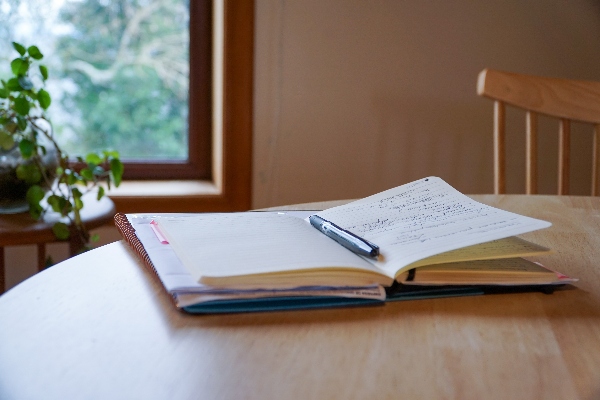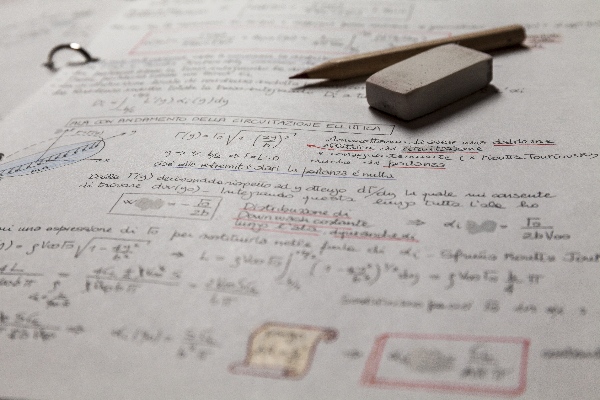Innovation is rife in the engineering industry, especially in sectors like embedded systems engineering where new technologies are being developed and integrated with many aspects of everyday life. When new ideas are being formulated and patented, it’s very important to be able to prove their origin and what led to their creation, which is where engineering notebooks come in.
In this article, we explain what an engineering notebook is, why you might need one, and the best steps to follow for keeping an engineering notebook.
What Is an Engineering Notebook?
An engineering notebook is either a physical or digital document of all the work an engineer has done on a certain project. This is usually recorded in chronological order and contains ideas, research, calculations, tests, observations and conclusions related to a project.
Whether it’s filled in by hand or updated digitally, an engineering notebook should provide a clear record of the trajectory of a project and the work that an engineer has done to contribute to its progress. It’s most commonly kept by engineers or developers who work in research and development, as well as being a common practice for engineering students.
Your engineering notebook is a space to record ideas and potential solutions for a project, as well as somewhere to store additional documents or diagrams related to your work. It is used to record conversations and feedback you’ve received, any changes in direction that these have led to, and the outcomes of tests during the development process.
If you work in research and development in the electronics industry then you will likely be required to keep an engineering notebook in some form. Understanding why they’re an important part of your role and how best to keep one is essential for any successful engineering candidate, as many employers will expect you to use an engineering notebook.

Why Do You Need an Engineering Notebook?
One of the main reasons that engineers are advised to keep notebooks recording all of their work is that it acts as legal proof about where their ideas came from and the date that designs, developments and experiments took place. Whilst disputes about patents and plagiarism aren’t very common, they can happen in the engineering industry and a comprehensive engineering journal notebook will help to prove the date and origin of your ideas.
Keeping an engineering notebook is also incredibly useful in terms of record keeping, as you have a place where all of your conversations, tests and experiment results are kept. This presents the information in an organised fashion, which makes it easier to find and refer back to.
An engineering notebook can also be used if someone takes over from your work for some reason and needs to know where you’ve got up to in a project. Similarly, if you need to present a progress update to a manager or stakeholder, your records should give you clear evidence of the work you’ve been doing.
Whilst an engineering notebook shouldn’t be considered the same as a portfolio, it can be useful to refer back to if you do put together a portfolio for a job application. Some employers may also appreciate being able to see how you work by looking at your notebook, as it gives them a better insight into how you approach tasks and challenges and whether you’re an organised person.

How to Keep an Engineering Notebook
There’s no official set of engineering notebook standards, which means that you have some freedom and flexibility when it comes to keeping an engineering notebook. Whilst traditional engineering notebooks have been paper and pen, some engineers prefer to have a digital version to record their notes and processes. Most of the following advice should be applicable to both types.
Contents
You won’t be able to complete a contents paper when you start an engineer notebook, but you should leave space free to keep adding to one as you fill up your notebook. This gives you an easy way of finding specific sections of your notes and being able to reference the order in which things happened during your project.
The way that you record the contents of your notebook is up to you. You may want to simply note the date that each section of notes was made, or you may want to give the work a title instead.
Most notebooks designed for engineers have page numbers already, which makes it easier for you to note down where each section begins and ends. If you have a digital engineering notebook, page numbers can be automatically added.
Research
As well as recording the work that you do yourself, it can be useful to start your engineering notebook with records of the research that is going to inform your project. If you’re writing your notes by hand then this could just be the key details of the information and the main takeaways, whilst digital engineering notebooks can include links to and quotes from other sources.
You’ll continue to add research to your notebook as the project progresses, but starting your notebook with the initial research you did or even theories you’re planning on investigating gives you a solid foundation for your work and makes it easier to understand the ideas and developments that come after this.

Templates
Whether you’re adding pages to a digital engineering notebook or planning out the structure of each page by hand, templates are a great way to keep an engineering notebook organised and give it a sense of continuity. You can create templates for mapping out ideas, recording feedback, tracking results and plotting potential adaptations or developments.
Templates can also help you to work more efficiently as, if you already have a layout designed for a type of notebook entry, you can quickly load this up or sketch it out and then start recording your thoughts. This ensures that your notebook stays neat and organised whilst also avoiding losing track of ideas by having to stop and mark out sections of a page.
Images and Diagrams
The type of engineering work you do will impact whether diagrams and technical drawings need to regularly feature in your engineering notebook. If you’re using a paper notebook and have digital drawings, plans or charts that are relevant to your research, these should be printed out and stuck on the next available blank page in your notebook, along with the date and a summary of what they are.
If you’re using a digital engineer’s notebook then it’s much easier to insert diagrams and even things like screenshots, but you may also end up with handwritten notes or ideas that you want to include in your records. These should be scanned or even photographed in high resolution and then inserted into your notes, along with details of when the image was created and what it shows.

Conversations
Whether you’re just talking through an idea with a colleague or receiving feedback from a supervisor, your engineering notebook should be used to record these discussions so that you can refer back to them. Notes should be taken to describe who the conversation was with, when it took place and the topics that were covered, as well as any conclusions, suggestions or ideas that came out of it.
It’s really important to include the date for these entries in your notebook, especially if the conversation leads to a new idea or change in direction that might be investigated in the future.
References
We already mentioned including relevant research that often features at the start of the best engineering notebooks, but you should also keep note of references to research, studies or other engineering projects that are relevant throughout your work. These can be listed at the end of the notebook or you can make note of them as you work, highlighting the time when you engaged with the reference and what you learned from it. Make sure to follow a formal referencing system, and print out or copy any particularly relevant quotes or findings.
Daily Records
A key feature of keeping an engineering notebook is daily records, which outline the work you have done every day. These don’t have to be long entries, but they can be a really useful way of being able to chart your progress and reference what happened at each stage of the project.
Engineers have different ways of keeping daily records, but however you decide to format the entry, it should include the date, what you worked on and any key observations or accomplishments. Alongside this, you can add the things we’ve discussed above, but it’s useful to write in your engineer notebook daily as well as recording findings, ideas and plans.
What Are the 4 Best Practices for the Engineering Notebook?
There’s plenty of advice and guidance available for using and keeping an engineering notebook, which means that recommended best practices may sometimes differ. Some organisations may also prefer you to use a particular engineering notebook format if they recommend the tool to all their employees.
In general, the following four best practices for the engineering notebook are universally applicable and encouraged.
Neat
Above everything, your engineering notebook should be neat. It’s sometimes hard to keep this in mind when you’re jotting down new ideas, keeping notes or sketching out plans, but you want your notes to be easy to read and understand when you come back to them. Designing templates, as we discussed above, is a great way to ensure that your notebook looks consistent and that your notes are all kept in an organised manner.
Accurate
One of the most important engineering notebook best practices is to write down the date for every piece of work you do. Even if it’s just jotting down a single sentence of an idea, being able to time-stamp how and when your project progressed is essential when it comes to proving the originality of your ideas or the timeline of your project.
Including the date is a key part of upholding accuracy in your engineering notebook, but it needs to apply to other areas of your note-taking as well. Any results that you’re recording and the process that you used to get them must be accurate, as you want your research to be repeatable for future use. Feedback also needs to be accurate, as again you might come back to this in the future and don’t want to be misled thanks to poor note-taking.
Legible
Every page in your engineering notebook needs to be neat, but without the notes also being legible, it will still be very difficult to understand. Other engineers should be able to pick up your notebook and be able to follow, replicate and continue your work, and this will be impossible if your writing or drawings aren’t legible.
Always use a quick-drying pen with black or blue ink and choose a notebook with thick pages so that your notes aren’t made illegible by writing on the other side. If you make a mistake, cross this out with a single straight line so that it can still be read.
If you’re using a digital engineering notebook format, keeping legible notes is much easier – just make sure that you’re using a clear and simple font of a legible size.

Thorough
The best engineering notebooks can be understood by anyone who reads them and should create a relatively clear set of guidelines for recreating the work involved. You need your notes to be thorough if this is the case, so it’s important to record all the necessary details of your findings, ideas and experiments.
Being thorough is also important if your notebook is used as evidence for the origin of an idea or a result. Failing to keep very thorough notes could weaken your claim that a concept is original, so whilst keeping concise is also an important consideration, you shouldn’t skimp on the details.
Summary
The majority of research and development engineers are expected to keep engineering notebooks, but it’s also a practice used in other industries and likely one that you may have been introduced to whilst studying. Some employers may ask to see engineering notebooks as part of your application or require candidates to know how to keep an engineering notebook, so it’s something that candidates in this industry should be familiar with and comfortable with.
If you’re a research and development engineer looking for a role in the electronic embedded systems sector, KO2 is a specialist recruiter that can help you find the ideal job opportunity. Take a look at our available research and development roles or get in touch to speak to the team about what you’re looking for.







